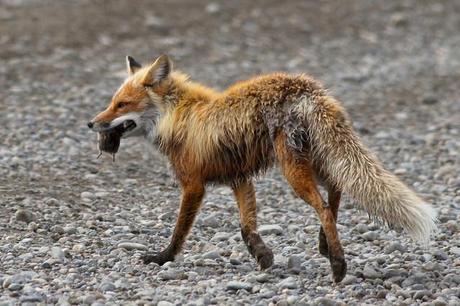List of Various Tundra Animals
The tundra is an ecosystem located at the North Pole. This biome surrounds the Arctic Circle and is the coldest biome of all on earth. While it is centered on the North Pole, there are other areas of the world are considered to be part of the tundra because they share the same climate. These areas include the region of Antarctica, parts of Alaska and parts of Northern Canada. In the tundra, the average winter temperature is well below negative 34 degrees Celsius and the summer range is between 3 and 12 degrees Celsius.
While the tundra only warms up for two months of every year. Despite the frigid temperatures, the tundra biome is thriving with life of all kinds. There are plants, mammals, insects, flowers and much more thriving in the tundra. The plants that grow on the tundra cluster together as a way to protect themselves from being uprooted by the harsh winds that blow there. Animals may hibernate most of the year or they may migrate to warmer climates for part of the year.

Here is a list and brief description of the common animals you will find in the tundra.
1. Arctic Fox – Known for its pure white fur, the Artic fox is much smaller than its forest cousins, it also isn’t always all white but the color of its fur will darken with the change of the seasons.
2. Killer Whale – The Killer Whale is an animal that is well suited to thrive in the cold climate of the tundra. It has layers of insulating blubber and its diet makes it easy for it to survive beneath the ice.
3. Sea Lion – Like the killer whale the sea lion is well equipped for the harsh climate. It is primarily a fishes and can use its strong body to swim after prey as well.
4. Ground Squirrel – Usually overlooked on the list of tundra animals, this little squirrel is thicker bodied than most and has a deep fur coating that is made with special hollow hair core growths that helps it to resist the wind.
5. Lemming – While many people associate lemmings with running off a cliff, but these weasel like creatures don’t behave like that and can both swim and stay on the tundra thanks to the thick coat of fat and sleek fur that covers them.
6. Seal – Like the whale and the sea lion the seal thrives in the tundra. During the summer months it will swim to the shores to breed and give birth and then lives off the ice floes and fish.

7. Beluga Whale – the pale white Beluga whale is another of the monsters of the deep that thrives in the cold waters of the tundra. They can be found in the waters off both poles.
8. Moose & Caribou – both the moose and caribou live in the tundras of Alaska and Canada, they are migratory animals and will travel to warmer areas during the worst of the winter months; however they can also survive the winters on the tundra as well.
9. Snowshoe Rabbit – these all white rabbits have distinctive black feet and are about the size of a jack rabbit. They can bound over snow and ice easily and do not not hibernate.
10. Polar Bear – the huge white polar bear is what most people associate with the tundra and the artic. They are layered in fat that they acquire during the spring and summer months of eating meat that allows them to hibernate easily. They do not sleep the whole winter through but wake periodically to hunt during the winter months.
11. Gray Wolf – considered to be the forebear of the sled dogs that are used to travel over the ice and snow, these wolves are much larger than their Southern cousins. They do not travel in large packs, but stay in close family units.
12. Ermine - Ermine or Short-tailed Weasels live in the Arctic tundra of North America and Europe. Head and body of ermines can range from 7-13 inches and tail can grow up to 5 inches. Ermines can weigh up to 7 ounces. They eat small animals , birds and insects.
13. Musk Ox - Musk Ox is a long haired, horned mammal that live in frozen environment of Alaska, Greenland, Canada, Sweden, Norway and Siberia. The musk ox weigh from 500 to 800 pounds. Musk ox travel in herds that protect the young from predators, like wolves.
14. Snowy Owl – The snowy owl is 20 – 27 inches long, weigh around 3.5 to 4.5 pounds and lives in the Tundra of North America. Snowy owls are almost white with scattered black spots. Males and females are similar but males are whiter.
15. Grasshopper - Grasshoppers are insects that can hop, walk and fly. Most of the grasshoppers are green in color. They eat plants and are eaten by birds, rodents, reptiles and spiders.
16. Mosquito - There are more than 2700 species of mosquitoes that are found around the world. Mosquitoes are often carrier of diseases like malaria, encephalitis, yellow fever, dengue fever, dog heartworm, West Nile virus.
Despite its harsh and inhospitable climate, the tundra plays host to many different animals throughout the year. While some may migrate out during the winter months, they return in the summer as the biome of the tundra holds unique resources that are necessary for the survival of their species.

